Recent Articles
Popular Makes
Body Types
10 Unusual Things About the 2018 Tesla Model 3
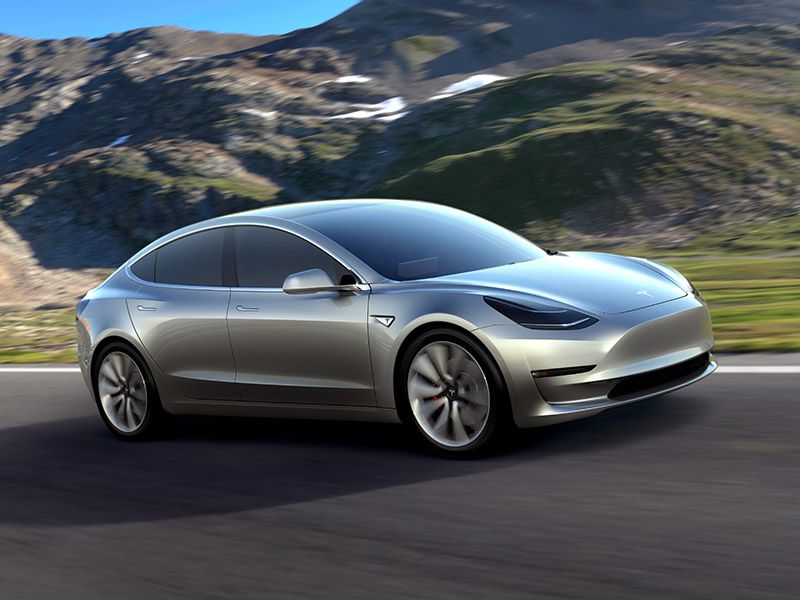
Tesla Model 3 driving mountain road ・ Photo by Tesla
The 2018 Tesla Model 3 isn’t really a car — at least not by today’s rules of automotive engagement. Yes, it is a compact sedan that can take up to five passengers from origin to destination, but that’s where the similarities end. Before the Model 3, the concept of pre-orders for mainstream automobiles didn’t exist — especially when money was requested in exchange for something that wouldn’t be delivered for months or years. Supercar shoppers were familiar with buying sight-unseen, but not middle-class consumers. Yet Tesla’s gamble has paid off to the tune of over half a million orders (valued at over half a billion dollars). And that’s just the Model 3 purchase process — the vehicle itself is even more innovative.
Though the Tesla Model 3 has many more than just 10 unusual features, we’ve whittled down the list to the coolest quirks. Let’s dive into one of the most exciting vehicles of the 21st century.
10) The Model 3 doesn’t have a single button on its dashboard.
There are precisely two features of the Tesla Model 3’s dashboard: a steering wheel and a massive tablet. On the steering wheel, Tesla includes two unassigned buttons, but on the dashboard itself, you won’t spot a single switch, toggle, or button. Critics may call this setup boring or oversimplified, but the beauty of the Model 3’s interface is that you aren’t looking all over the cabin to make adjustments.
Need to reposition the mirrors? Simply follow the prompts on the center screen, then use the left steering wheel control to pivot the left mirror and the right control for the right mirror. Seat heating, climate control, navigation, speedometer, remaining battery life, audio settings, wiper speed — you name it — it’s all within the intuitive, responsive center monitor. At first, this liberation from buttons is a little overwhelming, but after just an hour or two, you’ll start wondering why every other car cabin is so cluttered.
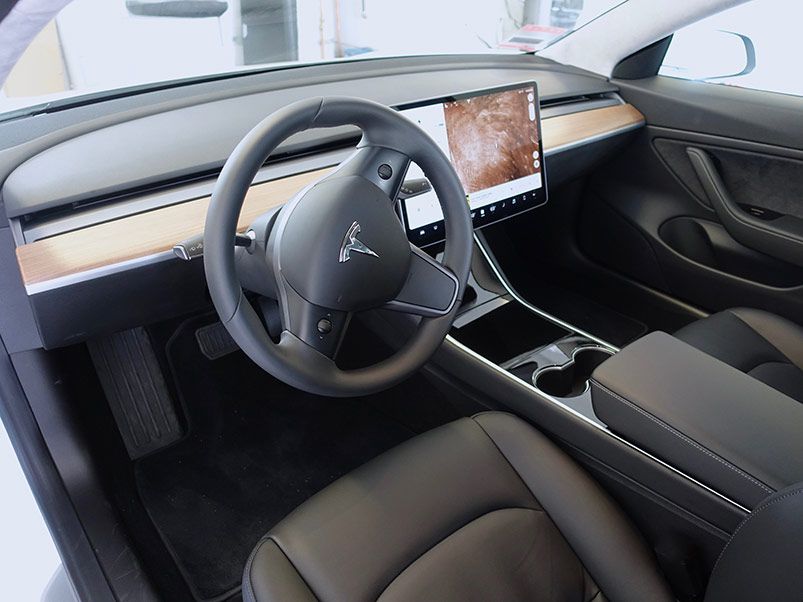
Photo by Wikimedia Commons
9) The Model 3 doesn’t require a key.
We don’t just mean it doesn’t need a key to open the door or start the car — many vehicles have remote entry and push-button ignition. No, the Model 3 doesn’t need a key ever. Instead, your smartphone becomes a virtual remote for your electric commuter. Within the Tesla app, owners can monitor battery life and charging progress, lock or unlock the vehicle, open the front or rear trunk, flash the headlights, sound the horn, locate their car via GPS, and even set the climate control.
With your smartphone in your pocket, you need only to approach the car for it to unlock. Get in, engage drive or reverse, and you’re off. When you arrive at your destination, simply get out and walk away with your smartphone — the Model 3 will turn off and lock the doors. Should you lose your smartphone or need to lend the vehicle to a friend, he or she can use a black key card to operate the vehicle.
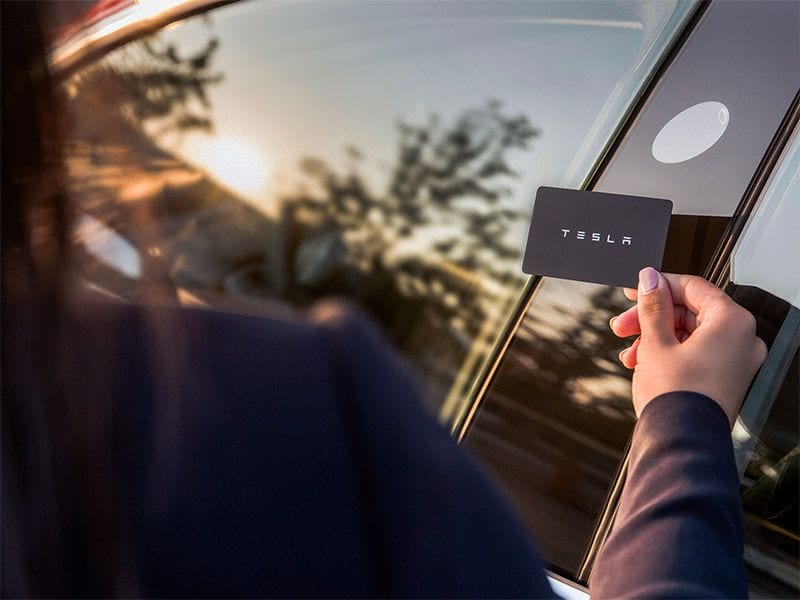
Photo by Tesla
8) The Model 3 includes hilarious Easter eggs.
It’s forgivable to assume that technology companies lose touch with the real world in their quest to solve its problems. Tesla, however, wants you to know the company retains a sense of humor. As proof, the Model 3 includes a number of “Easter egg” goodies hidden within its infotainment system.
To access these features, tap the Tesla logo at the top of the center screen and wait for a picture of the car to drop down. Doing this reveals four icons and a flurry of red, blue, and white sparkles. Passengers can play around with a digital easel, transform the map into the surface of Mars (and the Model 3 icon into a space shuttle), or engage “Santa Mode.” Santa Mode turns the Model 3 on the left side of the screen into Santa’s sleigh and all other cars into reindeer as the stereo plays “Jingle Bells.” And by pulling down on the drive stalk four times rapidly in Autopilot mode, the driver initiates Rainbow Road: The Model 3 icon is now driving on a multihued street and Saturday Night Live’s “more cowbell” sketch plays out over the sound system.
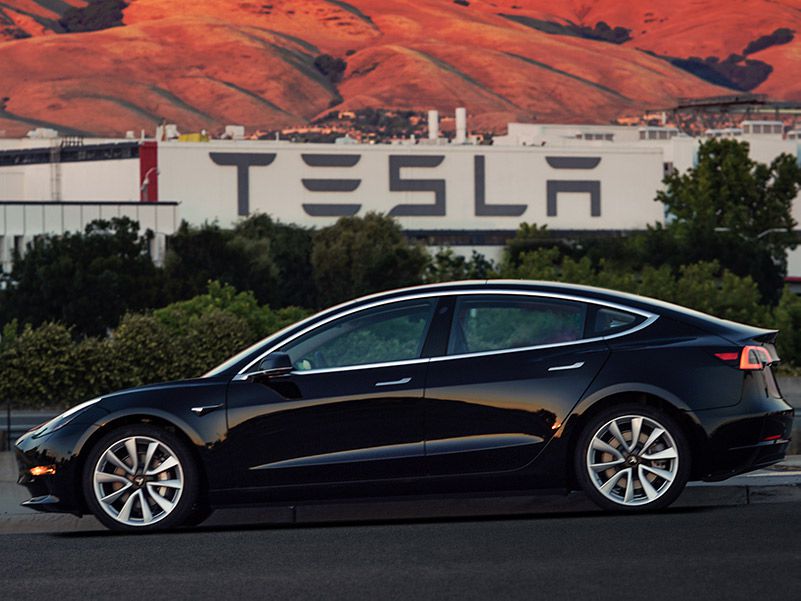
Photo by Tesla
7) The Model 3 doesn’t use air vents.
Fret not: The Model 3 will cool or heat you as needed. How the vehicle accomplishes this, however, is quite unusual. Rather than using vents with physical controls, the Model 3 features a single, continuous channel of air that's manipulated by a separate air stream.
These two air streams interact to route air high or low, left or right, based on the settings you select. Admittedly, traditional air vents work just as well, but the Model 3 dashboard’s clean look and single-step configuration is something you won’t find on any other car.
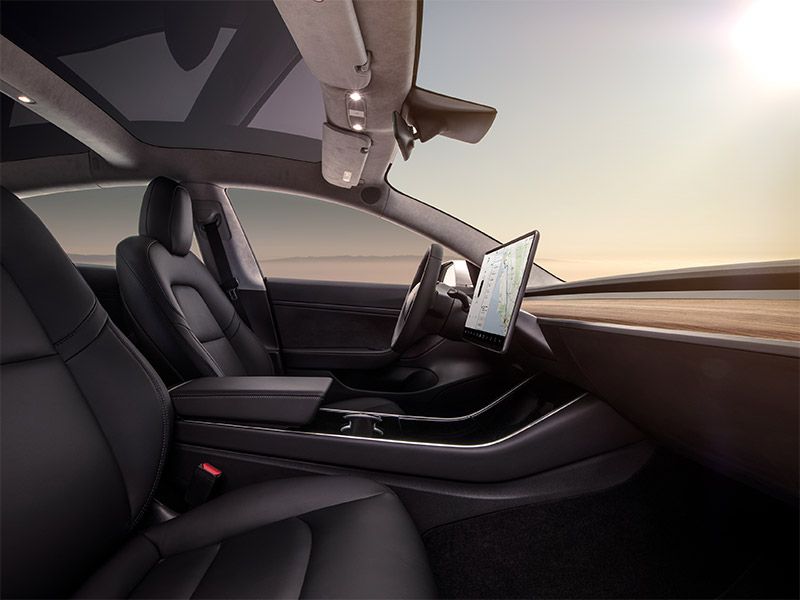
Photo by Tesla
6) The Model 3 can transform overnight.
You can stop imagining Optimus Prime and the other Autobots; physically, the Model 3 will look the same tomorrow as it does today. Under the sheet metal, however, much can change between sundown and sunrise. Thanks to Tesla’s over-the-air update system, scheduled software changes reconfigure the Model 3’s controls or activate hardware components for an improved driving experience. Based on feedback from customers and the availability of new technology, Tesla enhances its vehicles constantly. Today, the Model 3’s rear seats aren’t heated, but in two weeks, they will be.
The Tesla Model 3’s modularity is perhaps its crowning characteristic, and it's the one that makes it the most future-proofed vehicle on sale. Owners can add or customize their vehicles' features, while Tesla can make important fixes faster than a dealer ever could.
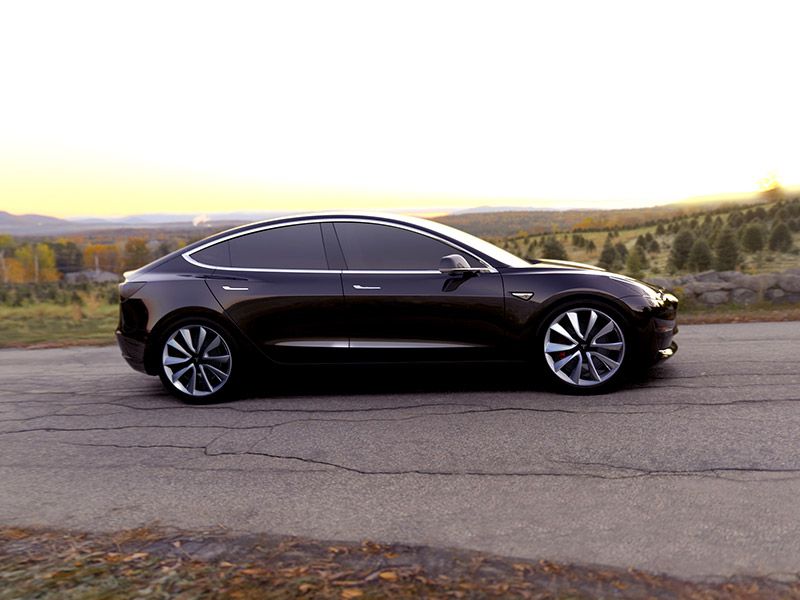
Photo by Tesla
5) The Model 3 can basically drive itself.
Tesla calls its Autopilot a highway driving aid to reduce fatigue. Specifically, Autopilot is a Level 2 autonomous driving system that requires human interaction to operate. However, the system’s hardware is ready for more sophisticated functionality — once government regulations permit such operation.
Autopilot can take over braking and acceleration on the highway according to a set speed and “assists” steering within lane markings. Though Tesla recommends you keep your hands on the steering wheel at all times, the system will work temporarily without your hands on the wheel. If your hands don’t touch the wheel for too long, the system will use a series of warnings to return control to the driver. Ignore them and the car will turn on its hazards and ease to a stop. Autopilot is one of the most advanced driver aid systems we’ve ever experienced, and it doesn’t take much imagination to see how a software update would make fully autonomous highway or city driving a reality.

Photo by Tesla
4) The Model 3 doesn’t have a grille.
This unique feature is pretty simple. Rather than putting a traditional front grille on an electric vehicle (a grille's function is to help cool a gasoline engine), Tesla opts to go grille-less on the Model 3.
Whether the front-end design is to your liking or not, it is a distinctive styling trait exclusive to electric vehicles.
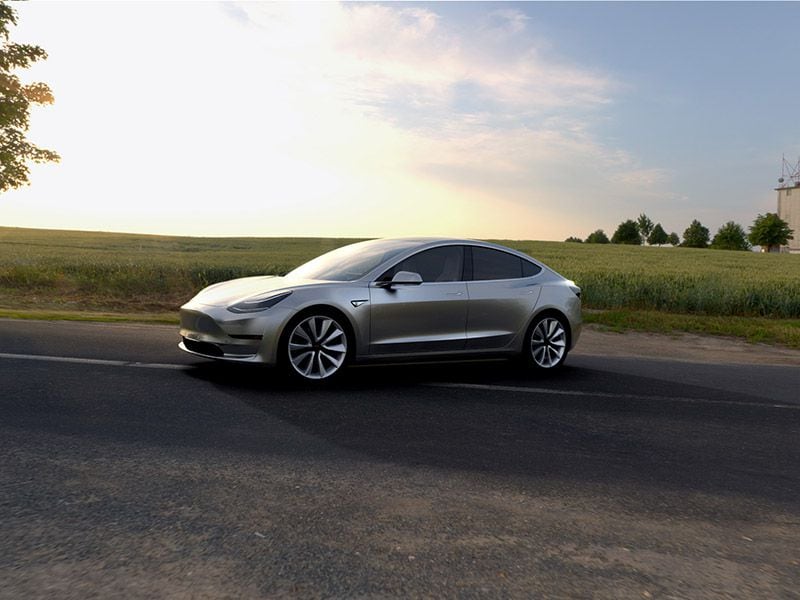
Photo by Tesla
3) The Model 3 has a full glass roof.
Panoramic sunroofs are a ubiquitous option for luxury vehicles, but not all panoramic roofs are equal. Some others, for example, are simply a standard sunroof-sized piece of glass over the front and rear occupants.
In the Tesla Model 3, however, this standard glass feature stretches from the A-pillar all the way to the trunk, creating a breathtaking view for all five passengers. Furthermore, the glass is available with UV tinting and polarization.
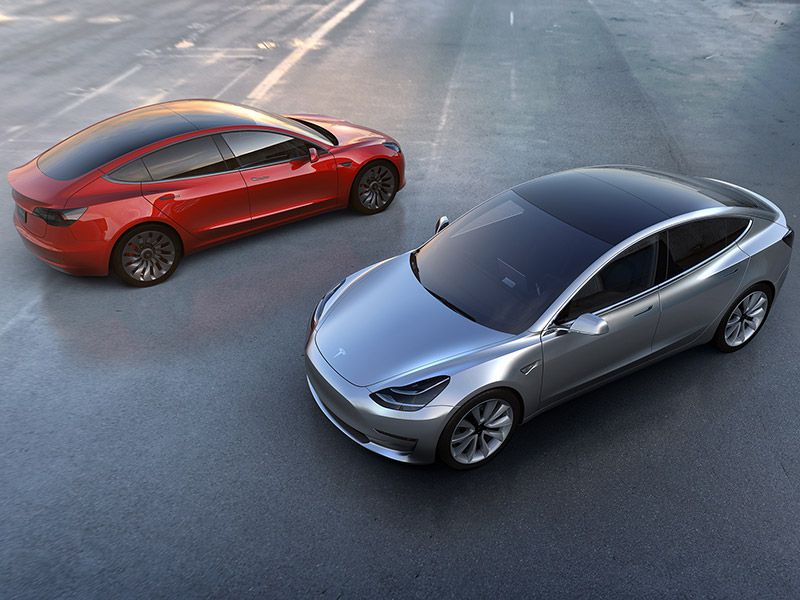
Photo by Tesla
2) The Model 3 doesn’t have smartphone integration.
Perhaps the only unique feature of the Model 3 that isn’t class-leading or advanced for the luxury segment is its lack of smartphone integration.
While Tesla offers Bluetooth and USB connection for your smartphone to play phone or music audio through the cabin speakers, there isn’t Apple CarPlay, Android Auto, or proprietary integration for text messaging, audiobooks, or other common apps.
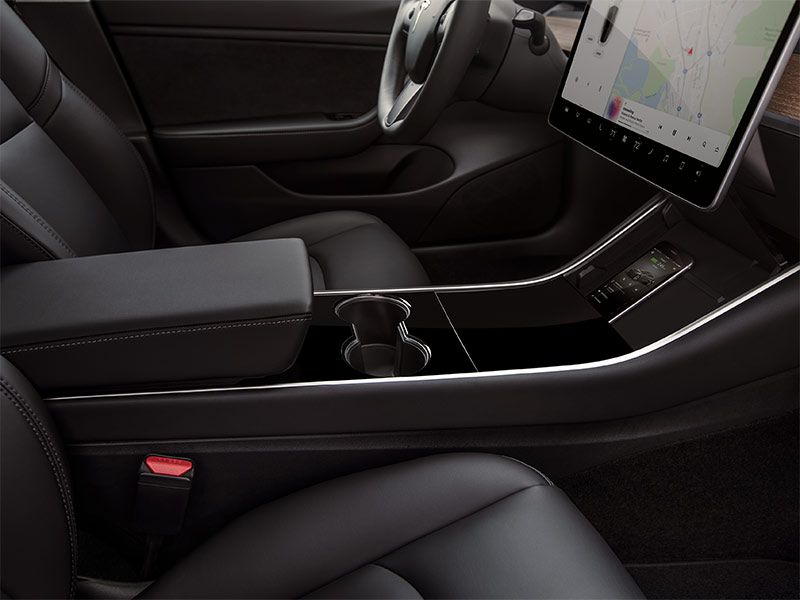
Photo by Tesla
1) The Model 3 uses its batteries to handle better.
Fans of traditional internal combustion engines complain that electric vehicles' heavy battery packs and electric motors decrease their agility. Tesla’s response to these critiques is twofold.
First, the Model 3 weighs between 3,500 and 3,880 pounds depending on your chosen battery configuration (standard or long range). That's directly on par with rivals like the BMW 3 Series and Mercedes-Benz C-Class. Second, the Model 3’s lithium-ion batteries are positioned beneath the floorboard and spread between the front and rear axles. This engineering strategy means the Model 3’s center of gravity is incredibly low, enabling sensational grip and responsiveness in corners. Add to that the instant torque of electric motors and the Model 3 is every bit as capable as its performance sedan competitors.
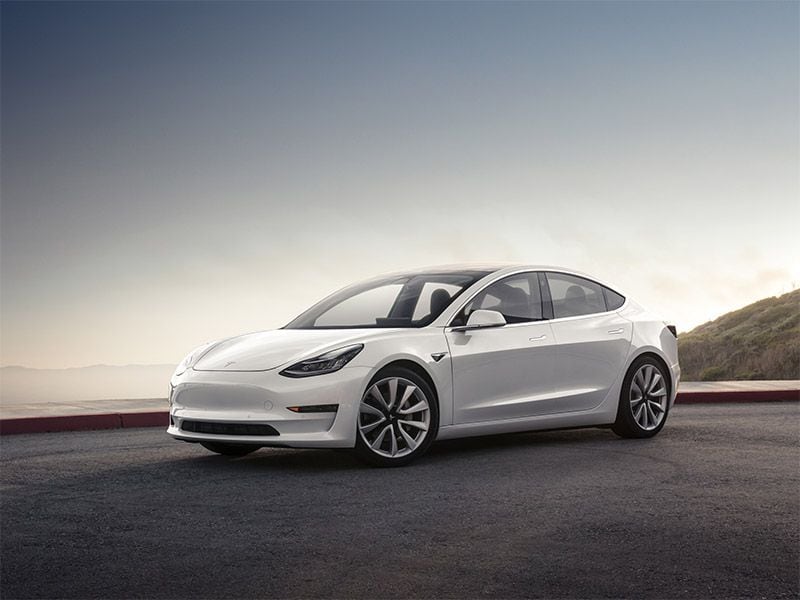
Photo by Tesla